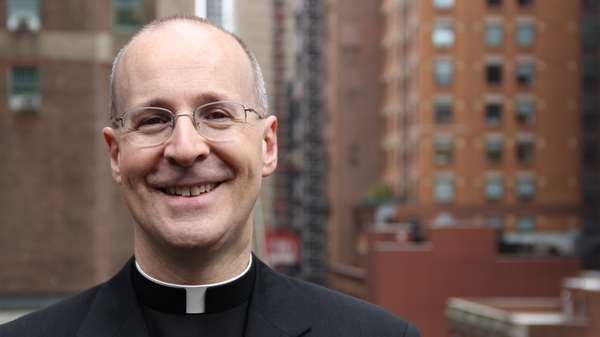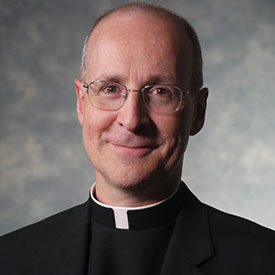The Top 10 Movies about the Saints


Rare is the saint’s biographer who can avoid these words in the first few pages of the book: “His life would make a great film!” Or “Her story was like something out of a Hollywood movie!”
Some lives of the saints seem tailored for the cinema, so inherently visual are their stories. The series of brightly colored frescoes in the Basilica of St. Francis, in Assisi, by Giotto, could be a storyboard pitch for a movie: Francis and his vision at San Damiano, Francis preaching to the birds, and so on. In his book A Brief History of the Saints, Lawrence S. Cunningham notes that there have been, since the talkies, over 30 versions of the life of St. Joan of Arc. Again, one can identify the visual elements with ease: her visions, her meeting the Dauphin, her military conquests, her martyrdom.
The lives of other saints, especially founders of religious orders, are more difficult to dramatize, since they often move from dramatic conversion to undramatic administration. It was long rumored that Antonio Banderas (the cousin of a Jesuit) was set to play St. Ignatius of Loyola on screen. But any marketable screenplay would end after the founding of the Society of Jesus. Few moviegoers would want to slog through an hour of Ignatius sitting at his desk composing the Constitutions or writing one of the 6,813 letters he wrote during his lifetime.
In our time, some saints and near-saints had a closer relationship to their film biographies. In 1997, Mother Teresa approved a script by Dominique LaPierre based on her life, which would star Geraldine Chaplin. "Bless him and his film,” she said. On the other hand, when Don Ameche approached the Abbey of Gethsemani in 1949 to obtain the rights to Thomas Merton's The Seven Storey Mountain, the abbot, Dom James Fox, said no. (For his part, Merton had been thinking along the lines of Gary Cooper.) After turning down the actor, Dom James asked Mr. Ameche if he had made his Easter duty that year. (He had.)
Films can be a fine introduction to the saints. And sometimes the movie versions are as good as any biography for conveying the saint's special charism. Here is a roster of the ten best films and documentaries about holy men and women, listed in order of their release.
 |
| Actress Jennifer Jones as St. Bernadette Soubirous |
-
The Song of Bernadette (1943).
Busloads of Catholic schoolchildren were taken by enthusiastic priests, sisters and brothers to see this movie upon its release. Since then, the story of the Virgin Mary appearing to a poor girl in a backwater town in Southern France in 1858 has lost little appeal. Based on the novel by Franz Werfel, the movie is unabashedly romantic, with a luminous Jennifer Jones as St. Bernadette Soubirous and the handsome Charles Bickford as her initially doubtful but ultimately supportive pastor, Abbé Peyramale. Some find the score overripe, the dialogue saccharine and the acting hammy (Vincent Price all but devours the French scenery), but the stalwart character of Bernadette comes through. So does the shock that greeted what initially appeared to be a little girl’s lie. (In reality, Bernadette’s parents beat her after hearing their daughter’s tale.) “The Song of Bernadette” effectively conveys Bernadette’s courage in the face of detractors and her refusal to deny her experiences, despite everyone else’s doubts.
-
Joan of Arc (1948).
Cinéastes may still sigh over “The Passion of Joan of Arc,” the 1928 silent film starring Maria Falconetti and directed by Carl Theodore Dreyer, but this Technicolor sound version is unmatched for its colorful flair. At 33, Ingrid Bergman was far too old to play the 14-year-old girl, and too statuesque to portray the more diminutive visionary, but the movie makes up for those shortcomings with the intensity of Bergman’s performance and the director Victor Fleming’s love of sheer pageantry. Watch it also for the foppish portrayal of the Dauphin, and later, Charles VII, by José Ferrer. You can tell that he’s going to be a bad king.
-
A Man for All Seasons (1966).
It is hard to go wrong with a screenplay by Robert Bolt (who also penned “Lawrence of Arabia” and, later, “The Mission”); Paul Scofield as Sir Thomas, Orson Welles as Cardinal Wolsey; Wendy Hiller as his wife, Alice; and Robert Shaw as an increasingly petulant and finally enraged Henry VIII. Here is a portrait of the discerning saint, able both to find nuance in his faith and see when nuance needs to give way to an unambiguous response to injustice. The movie may make viewers wonders whether St. Thomas More was as articulate as his portrayal in Bolt’s screenplay. He was, and more, as able to toss off an epigram to a group of lords as he was to banter with his executioner before his martyrdom. Read Thomas More, by Richard Marius or The Life of Thomas More, by Peter Ackroyd, for further proof.
-
Roses in December (1982).
During a time when the fight for social justice and the “preferential option for the poor” is often derided as passé, this movie reminds us why so many Christians are gripped with a passion to serve the poor, as well as the lasting value of liberation theology. The bare-bones documentary is a moving testament to the witness of three sisters and a lay volunteer who were killed as a result of their work with the poor in El Salvador in December of 1980. “Roses” focuses primarily on Jean Donovan, the Maryknoll lay missioner, chronicling her journey from an affluent childhood in Connecticut to her work with the poor in Latin America. The film’s simplicity is an artful counterpoint to the simple lifestyle of its subjects and the simple beauty of their sacrifice.
-
Merton: A Film Biography (1984).
I’m too biased to be subjective about this short documentary about Thomas Merton, produced by Paul Wilkes, the Catholic writer. Almost 20 years ago, I happened to see this film on PBS and it started me on the road to the priesthood. Last year, I had the opportunity to watch it again and found it equally as compelling. A low-key introduction to the Trappist monk and one of the most influential American Catholics told with still photographs and interviews with those who knew Merton before and after he entered the monastery. The best part of this film is that by the end you will want to read The Seven Storey Mountain, and who knows where that will lead you?
-
Thérèse (1986).
This austere work is a rare example of a story about the contemplative life that finds meaningful expression on screen. Alain Cavalier, a French director, deploys a series of vignettes that leads the viewer through the life of Thérèse Martin, from her cossetted childhood until her painful death. It doesn’t quail from showing how difficult life was for Thérèse in the convent at Lisieux, nor the physical pain that attended her last years. But it also shows the quiet joy that attends the contemplative life. A masterpiece of understatement, “Thérèse,” in French with subtitles, reminds us that real holiness is not showy, and the Carmelite nun’s “Little Way” of loving God by doing small things, is made clear to us through this gem of a movie.
-
Romero (1989).
One of the great strengths of this movie about the martyred archbishop of San Salvador is its depiction of a conversion. Archbishop Oscar Romero moves from a bishop willing to kowtow to the wealthy to a man converted—by the death of friends, the plight of the poor and his reappropriation of the Gospel—into a prophet for the oppressed. Raul Julia invests the archbishop of San Salvador with a fierce love for the people of his archdiocese that manifests itself in his work for social justice. The actor said that he underwent of a conversion himself while making the film, something that informs his performance. One scene, where Romero wrestles with God—half aloud, half silently—is one of the more realistic portrayals of prayer committed to film.
-
Blackrobe (1991).
Admittedly, Bruce Beresford’s film is not about a particular saint. Nevertheless, it hews closely to the lives of several 17th-century Jesuit martyrs, including St. Jean de Brébeuf and St. Isaac Jogues, who worked among the Hurons and Iroquois in the New World. (The protagonist, who meets St. Isaac in the film, is named “Father Laforgue.”). Some Catholics find this movie, based on the stark novel by Brian Moore, who also wrote the screenplay, unpleasant for its bleak portrayal of the life of the priest as well as for its implicit critique that the missionaries brought only misfortune to the Indians. But, in the end, the movie offers a man who strives to bring God to the people that he ends up loving deeply. The final depiction of the answer to the question, “Blackrobe, do you love us?” is an attempt to sum up an entire Catholic tradition of missionary work.
-
St. Anthony: Miracle Worker of Padua (2003).
In Italian with subtitles, this is the first feature-length film about the twelfth-century saint best known for helping you find your keys. Hoping to become a knight in his native Lisbon, Anthony is a headstrong youth who almost murders his best friend in a duel. As penance, Anthony makes a vow to become a monk. He enters the Augustinian canons but is soon caught up with the lure of Francis of Assisi, who accepts him into his Order of Friars Minor. The movie successfully conveys the saint’s conversion, the appeal of the simple life and the miraculous deeds reported in his lifetime. The only drawback is that, if medieval portraiture is to be believed, the film’s Anthony looks more like Francis of Assisi than the fellow who plays Francis of Assisi.
-
The Saint of 9/11 (2006).
You may know Mychal Judge, O.F.M., as one of the more well known heroes of the terrorist attacks on the World Trade Center. Father Judge, a beloved fire chaplain in New York City, was killed on Sept. 11, 2001, while ministering to the firefighters in the north tower. What you may not know is that the Franciscan priest was also a longtime servant of the poor and the homeless in New York City, an early minister to AIDS victims when many others (even doctors and nurses) shunned them, and an experienced pastor at three parishes. This remarkable new documentary is a clear-eyed look at Father Judge’s life, showing how his faith enabled him to deal with his alcoholism (through Alcholics Anonymous) and accept his homosexuality (he was a celibate priest), reminding us that sanctity always makes its home in humanity. An Irish Mercy sister, who knew him during a sabbatical in Ireland says simply, “He was a good man who loved so many.” It is the best movie about the priesthood in years. And, in a nod to the first movie on the list, the film notes that besides his devotion to the homeless, to the sick and to his beloved firefighters, the Franciscan priest Judge enjoyed another devotion: to Our Lady of Lourdes and to St. Bernadette.
Reprinted from America, October 30, 2006 with permission of America Press, Inc. © 2006.
All rights reserved. For subscription information, call 1-800-627-9533 or visit www.americamagazine.org.


